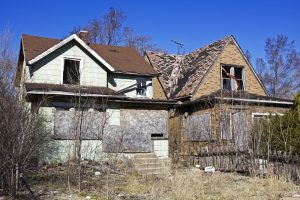Short-Term House Flipping: Is It a Feasible Investment Strategy?
Short-term house flipping is a rather straightforward investment strategy. You buy a house below the market value, make some minor renovations, and sell it for profit. The trick is to do it fast and with a maximum profit margin.
However, this strategy isn’t for everyone and there are many mistakes that beginners might make that will turn your flip into a flop and lose you a lot of money. Therefore, you need to do your research into tips that will help you make a great deal on every flip.
Does Short-Term House Flipping Bring Money?
You can make a lot of money off house flipping if you understand and play the market well. Even if your profit margin isn’t big, you still end up with a lot of money that you can invest in a better next project, which will make you even more.
It’s essential to understand that short-term house flipping is rather fast-paced. Therefore, it’s the best investment strategy for active people who want to make real estate their main source of income and build up capital fast.
When you do house flipping, you need to know exactly how to boost the property’s price to the maximum with the smallest possible investment. This will require the use of specialized services, like home warranties and professional staggers.
House Flipping Pros, Cons, and Risks to Consider
Like any investment strategy, house flipping has some disadvantages and risks. You’ll need to learn how to minimize them with a sound plan and good financing. First, the money. One of the biggest issues with short-term house flipping is that it requires a rather large capital to start.
This particular industry mostly relies on the 70% rule, which means that you need to pay for the property no more than 70% of its post-renovation resale value, minus the renovation costs. In this case, you’ll make very good profit on every deal, but real estate investments rarely go perfectly to plan. There are many risks involved from some hidden property issues to a sudden shift in the market. You cannot control or safeguard against all of these factors. Therefore, house flipping will always have a measure of risk.
It’s true that in order to succeed with this type of investment, you will need to renovate and sell the property fast so you can invest in a new one immediately. That’s a huge risk, but it’s actually less of a risk than buying a property to hold as in that case, you won’t be able to sell it fast if you need some liquid capital right now. Having a diverse short-term house flipping, on the other hand, means you’ll always have some money on hand to keep the business running, even if one of your properties flops.
Top 10 Tips for New Home Flippers
1. Invest in a good home warranty plan
On average, you can sell a property with a home warranty plan for about $2,300 more and 11 days faster. Now consider that this plan costs about $500 a year. This means that you might get about $1,800 profit from this policy alone.
That’s a rare opportunity for a house flipping investor, so you should grab it right away. Just be careful to choose one of the good home sellers’ home warranties. Some of the plans are designed specifically with home sellers in mind, so they appeal to prospective buyers better.
2. Stage your flips
There are many reasons to stage your flips, but the most important one is that this will help you maximize your profit margin. Staging allows you to avoid doing some improvements because the property will be made to look so amazing, prospective buyers won’t pay attention to those details. Therefore, this practice enables you to avoid one of the biggest mistakes that beginner home flippers make, which is over-improving the house.
However, bear in mind that for this plan to work, you will need to use the services of a professional stager. This work requires finesse and skill that you won’t be able to acquire after watching a couple of dozen training videos on YouTube. Therefore, factor this expense into your calculations when assessing the property.
3. Hire a professional when needed
A big part of the money you can make on a house flipping project comes from sweat equity. Therefore, it’s no surprise that people often try to do everything on their own. However, unless you have a lot of free time as well as professional tools and necessary skills, doing all the work yourself will result in sub-par repairs that will cause problems in the future.
To prevent this, you will need to use the services of a professional to perform the tasks you cannot do well on your own. But bear in mind that you need to vet the contractor carefully as you have to make sure they can be trusted to do great work for your money. Your future reputation is riding on it.
4. Have a Plan “B”
As mentioned before, house flipping is risky, so you have to be prepared to not being able to sell for profit right away. This is when an exit strategy can make a difference between delayed profit and a huge loss.
Your “plan B” in this case should be renting out the property until the market shifts. This means that you need to keep this possibility in mind when assessing the property initially. Always pick something that will be able to bring in cash flow in a pinch.
5. Always start slow
No matter how bold you are or how potentially good the deal seems, you need to start with the least risky flips available. This will allow you to gain valuable experience as well as develop a smooth house flipping technique.
Remember that in the beginning, you’ll need to establish your network of reliable inspectors, real estate agents, contractors, etc. You will also need to understand exactly how much time renovations as well as buying and selling will take in your market. By going slow, you’ll be able to establish yourself in the business so by the time you get to riskier projects, you’ll be able to minimize the damage if they flop.
6. Go for the best neighborhood
Do your research of the market and search for a flipping property in the best and most stable neighborhood you can afford.
This will help you sell faster and reduce the risk of market changing abruptly and leaving you stuck with a property that values at almost nothing.
7. Network with buyers
Networking is a crucial element for house flipper’s success. That’s something everyone knows, but people often disregard that you should network not only with contractors and other professionals who will help you restore properties fast. You should also always network with prospective buyers.
In fact, you should do this before you even pay for the house. You need to understand the needs and interests of prospective buyers to see whether you can create a property they will want to by with your limited budget.
8. Focus on fixing kitchens and bathrooms
This type of renovations adds the most value and with the help of a good stager, even minor work on these areas will look impressive.
Do cosmetic repairs if your budget is very small and use colors wisely to make the rooms appear bigger and more modern.
9. Never dismiss landscaping
Landscaping can add a lot of curb appeal for a rather small investment. Therefore, you should always include it into your house flipping plan. It can make even an unimpressive property look charming.
Note that you don’t have to invest a small fortune in a landscaping designer. If your budget is small, focus on making the grounds as neat as possible. Mowing and watering the lawns are a must. You should also trim the hedges because they might ruin the first impression your property makes on a prospective buyer.
10. Make the seller your “silent partner”
If you struggle with financing, you should try to get the seller on board with supporting your project. In this case, they should be able to cut the price to the very minimum. You will repay their discount by giving them a part of the profit you make on the resale.
You should also consider using seller financing. But if you do this, have a professional draw up the contracts to be sure that everyone is treated fairly.
Final Thoughts: Should You Try Short-Term House Flipping?
Short-term house flipping is definitely a good investment strategy for people who want to make this business their main focus. However, it might not be a good match for those who don’t have the time to manage renovation projects while staying extremely active on the market and networking to sell the renovated asset fast.
If you want to try out this strategy, start with a single low-risk property and see how it agrees with you. Use a variety of specialized services in order to maximize your profit from this investment. Consider your personal reaction to this business and reassess it every few months to make sure you are staying on track with your goals.
Sponsored by: Home Sellers’ Home Warranties









1 comment
Get Back Your Scammed funds A Tested and Trusted Way to Recover Stolen USDT CYBERSPACE HACK PRO
I was a victim of crypto currency scam Late last year. A Facebook imposter convinced me on how I would gain large profit from an authorized crypto company that he claimed helped traders invest and gain profits. I didn’t hesitate to invest with them, I never knew they were only scamming me they made me away with my $541,000 woth of crypto. I was in disbelief and discomfort as this was my hard earned money and life savings. After reading positive articles online and testimonies about a licensed group of genius Hacker called Cyber space hack pro an experts in crypto. btc recovery and renders any form of hacking. After having a conversation with them, they were able to recover back my lost money, as a form of appreciation this was the best I could do for them by testifying of their great service and also putting out their Contact out here for anyone who would also need their help Email: Cyberspacehackpro(@)rescueteam.com OR via WhatsApp +1 (659) 217 9239